How I Learned to Stop Worrying and Like Graffiti
I didn’t even need to visit the Banksy exhibition
Fifty-one years ago the trade union activist Jimmy Reid delivered his famous speech on alienation. In it, he states that the “rat race is for rats. We’re not rats. We’re human beings.” I was thinking about this quote after learning that Banksy had a big exhibition at Glasgow’s Gallery of Modern Art. For Banksy, the rat is a metaphor for the graffiti artist, scurrying around after dark while being demonised by authorities. Reid is a humanist who wants to free people from their alienation, Banksy has resigned himself to this condition and is making the best of it.
The arrival of Banksymania in Glasgow initially had me worried. Since the pandemic, the city has felt like it is in terminal decline: shops are closing, there are more wayward addicts on the street, and the graffiti is getting out of control. The last thing we need is Banksy encouraging anti-social behaviour.
Broken windows theory is the idea that if you allow one window to go unrepaired within a week all the windows will be broken. Likewise, with graffiti, if you let one “tag” remain on a wall, in a month it will be covered in tags. As this 2008 study shows, graffiti leads to increased littering and stealing. So what is to be done?
In my darker moods, I fantasise about retribution. Not chopping off the hands of perpetrators but maybe a Chinese burn. However, I am optimistic about human nature at heart. I want to help remove the alienation that people feel in the first place rather than punishing them for expressing it. Rutger Bregman has written convincingly about how mass incarceration, extrapolated from broken windows theory, hasn’t done much to make America safer.
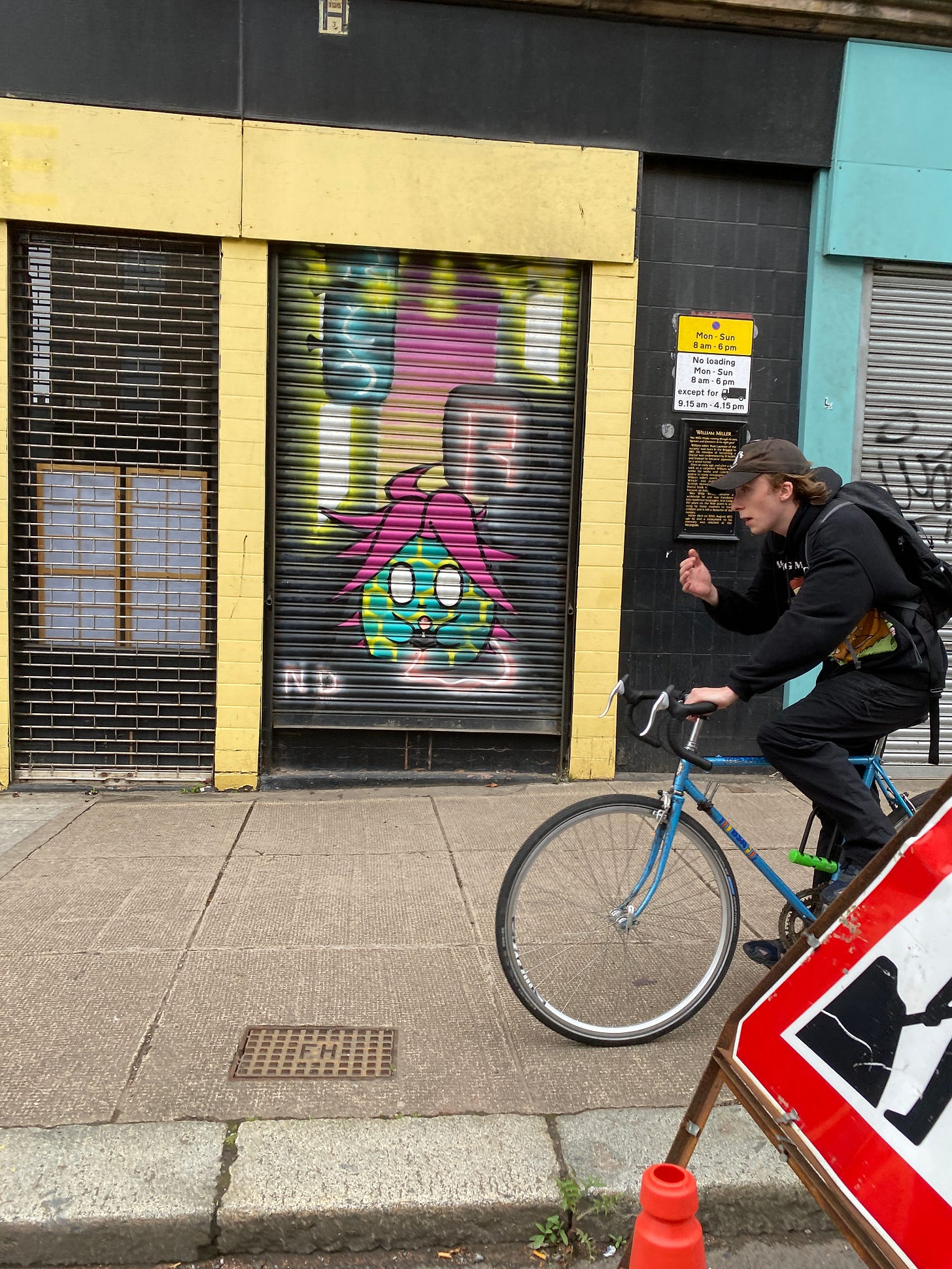
One person who is particularly enthusiastic about the Banksy exhibition is Panda who was interviewed in The Herald last week. Panda makes the case that the council should stop removing graffiti and create legal spaces for the artists to work: “street art and graffiti is a really popular thing now. It's at the vanguard of what is cool a lot of the time and so it's kind of a no-brainer to keep it."

I saw a link to this interview on Twitter and replied with some of my objections. I don’t dislike it merely because of broken windows theory, but also because of the aesthetic. So much graffiti is ugly. Can’t they just paint on canvases at home? Why does the world owe these artists an audience?
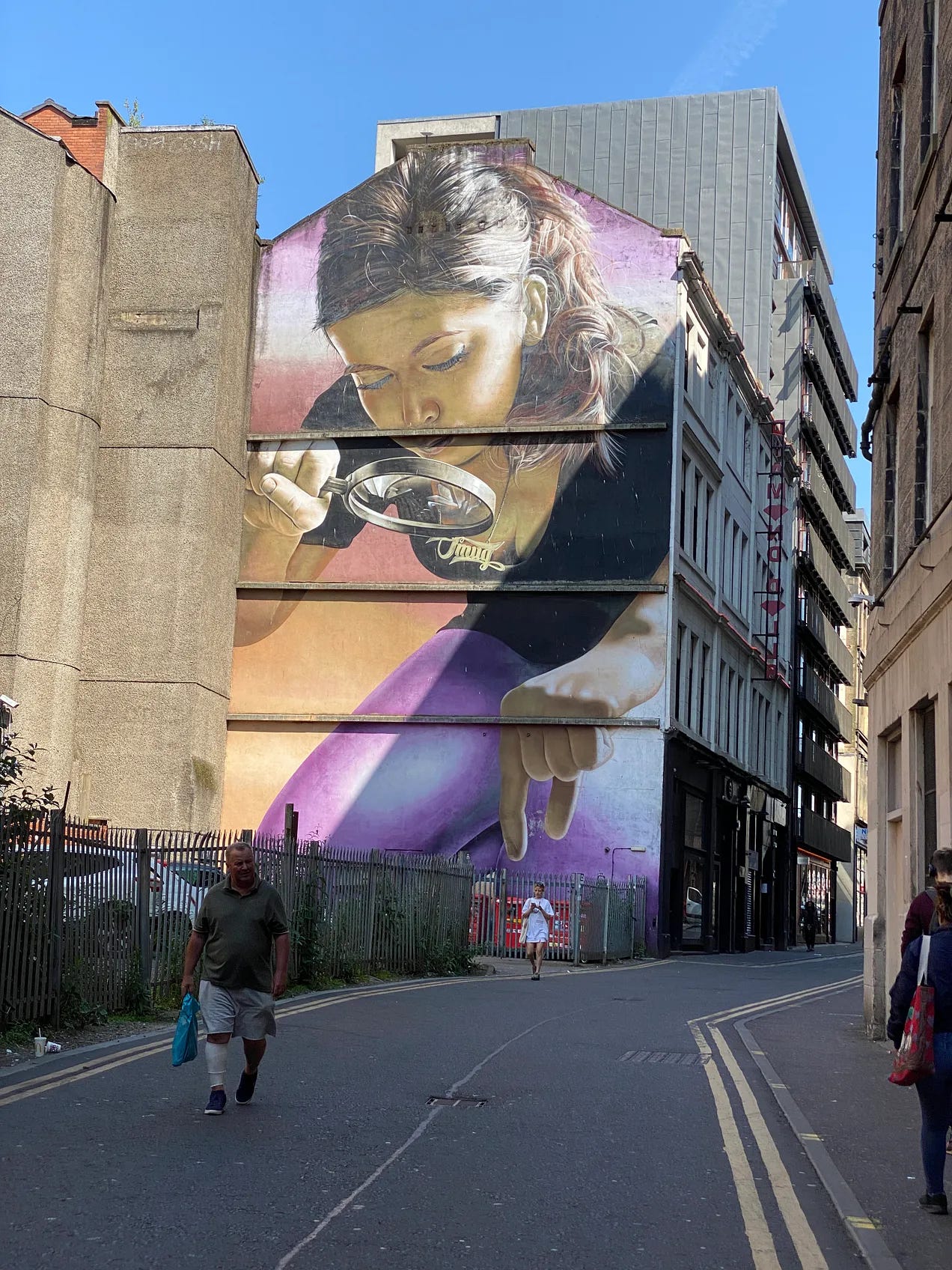
Large, commissioned murals and legal walls are one thing1 but tagging is odious. It seems unreasonable to force it on the public with no accountability.
Panda’s replied that graffiti helps gentrify an area and that we don’t get any say about the adverts we see. As with Banksy, Panda is responding to the situation of neoliberal alienation by making the best of it: facilitating workshops and building a brand in the hope of getting paid by fans of his work.
It has been a long time since I got into a Twitter spat and I found it invigorating chatting with him. Although I took a contrarian position, his links and arguments made me more observant of the variety of graffiti and street art. In particular, where it is located.
It seems to me that graffiti is a test of the urban immune system. It takes over areas that are in economic decline and shows exactly where absentee landlords are. Although tagging looks like petty egotism, it can be used as a test to see whether a place is neglected enough for street art. I still think graffiti should be illegal and the artists forced to pay for clean-up costs, but legal walls and freedom from prosecution on wasteland seem reasonable.
The conclusion that Jimmy Reid reaches at the end of his speech is that we need secular humanism and direct democracy. Graffiti is certainly direct, if not very democratic. While I prefer an aesthetic that is more harmonious, I am now curious to see how graffiti changes over time in Glasgow.
See the vote on Visit Glasgow:




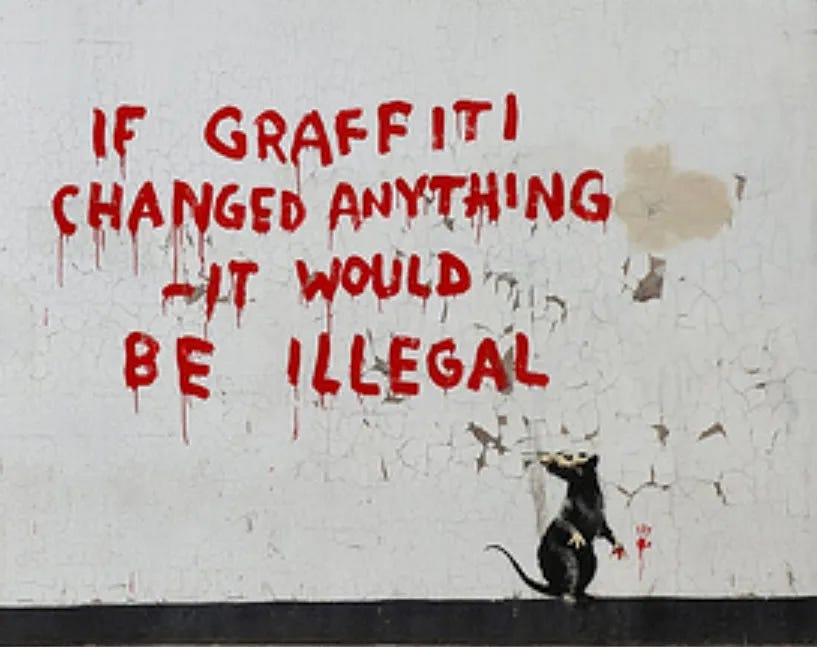


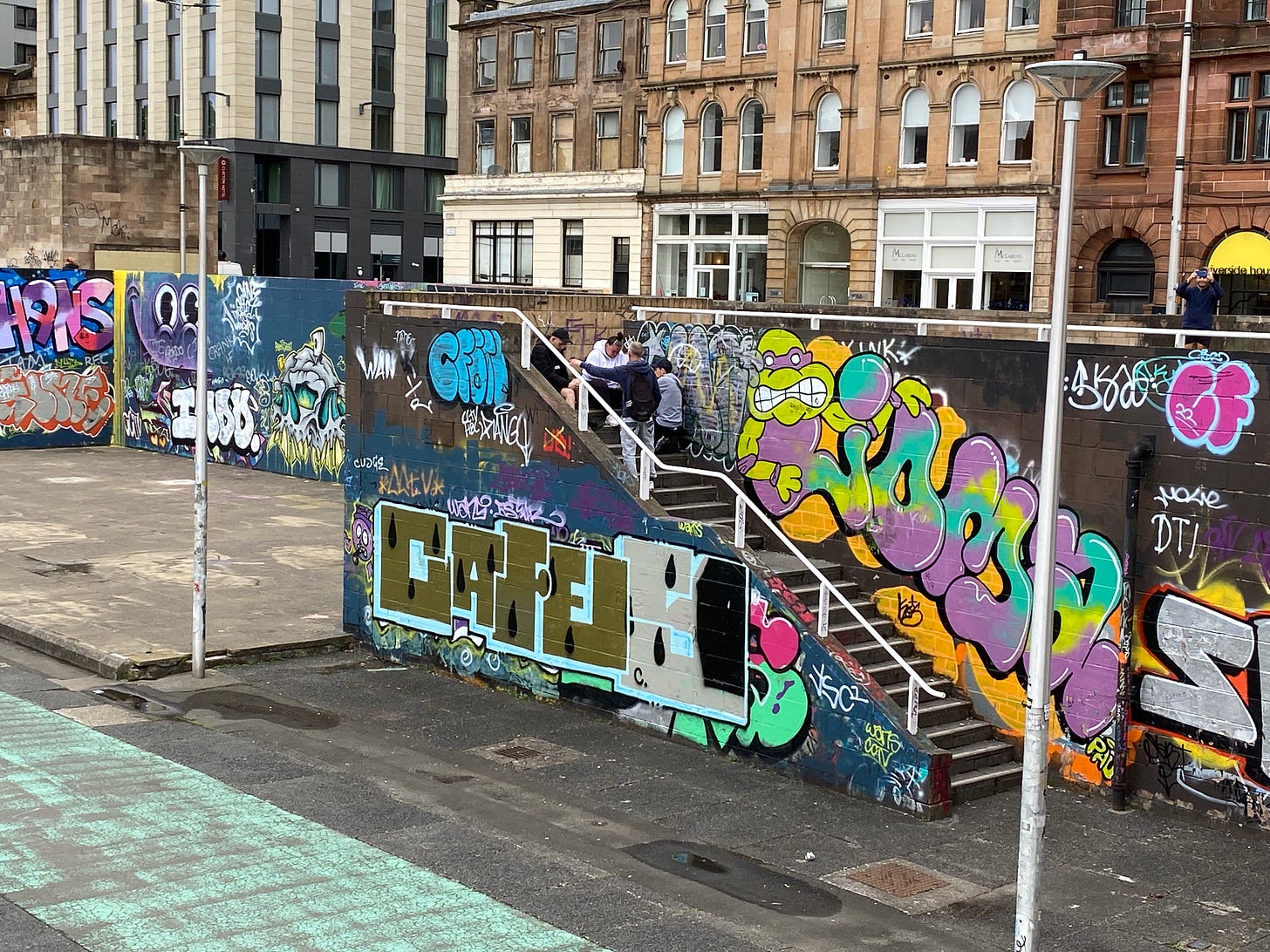


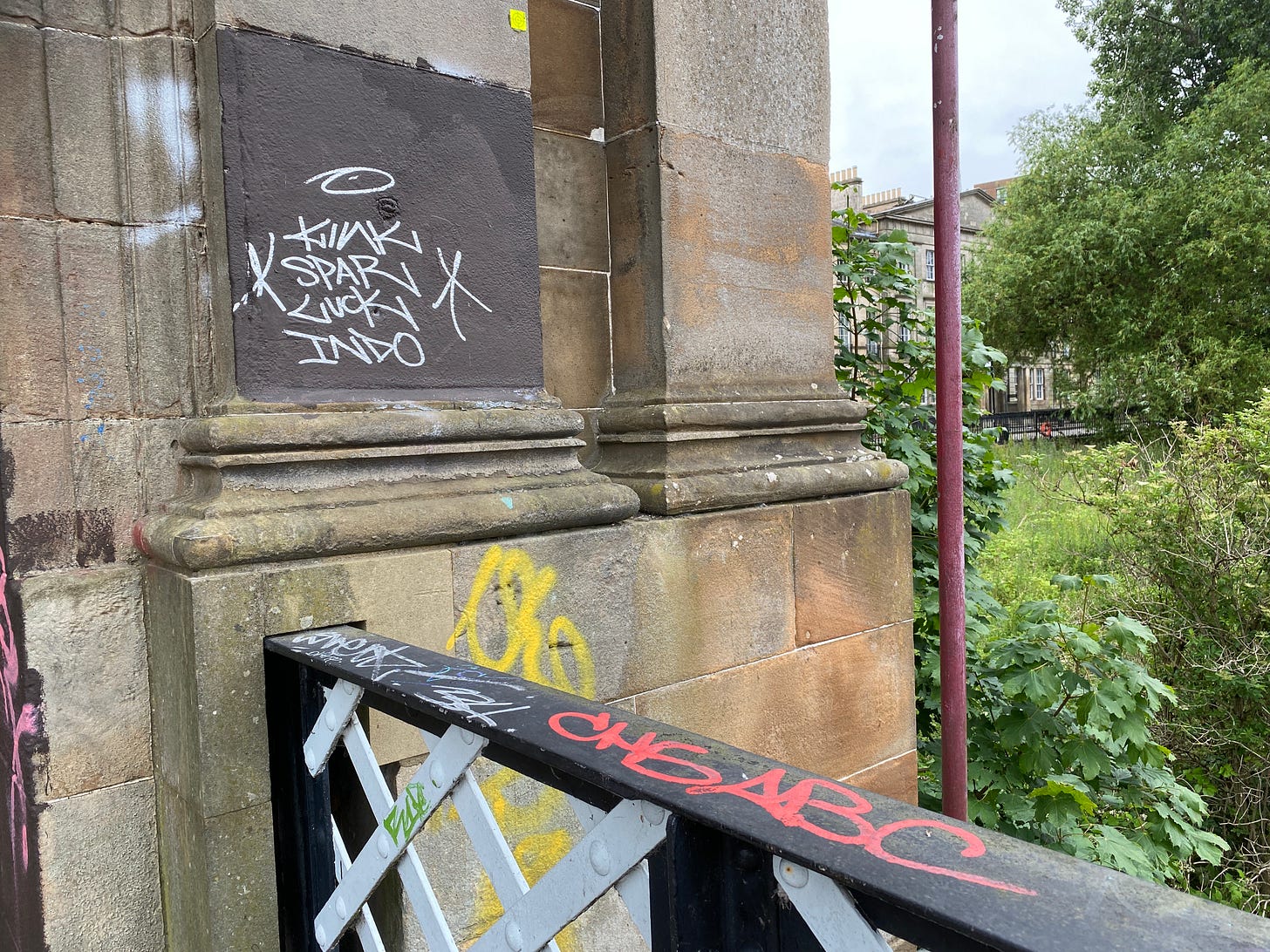
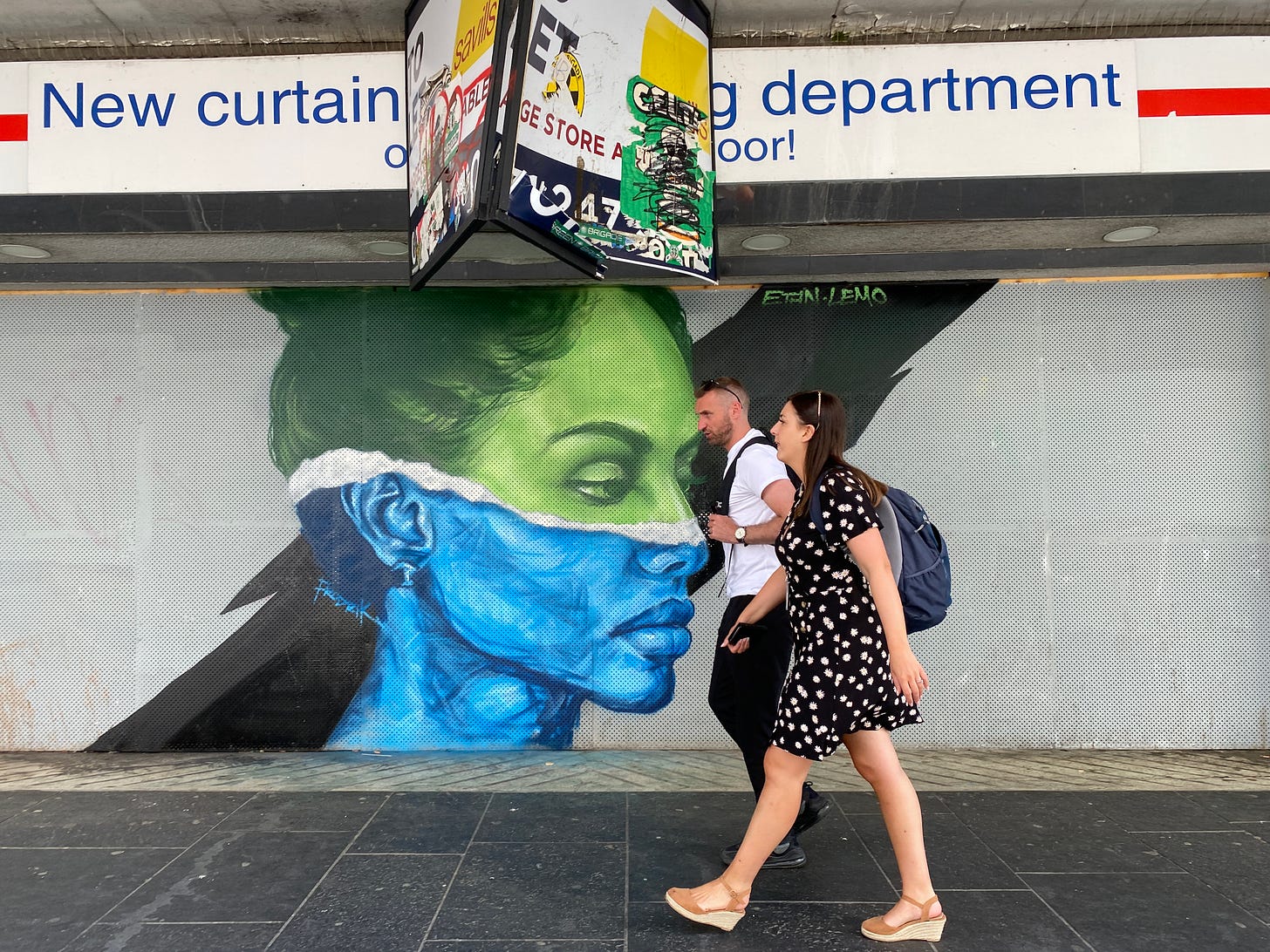
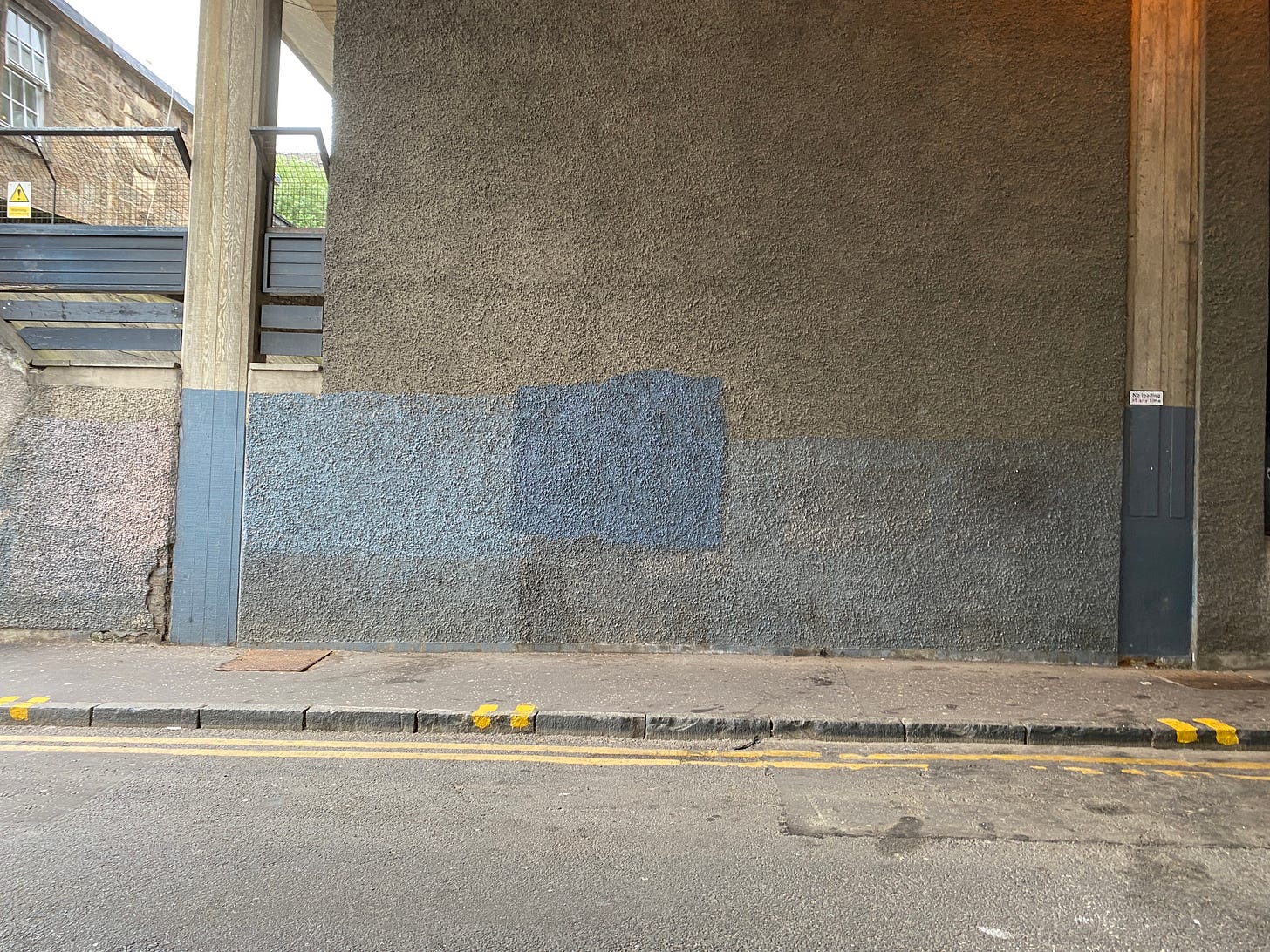
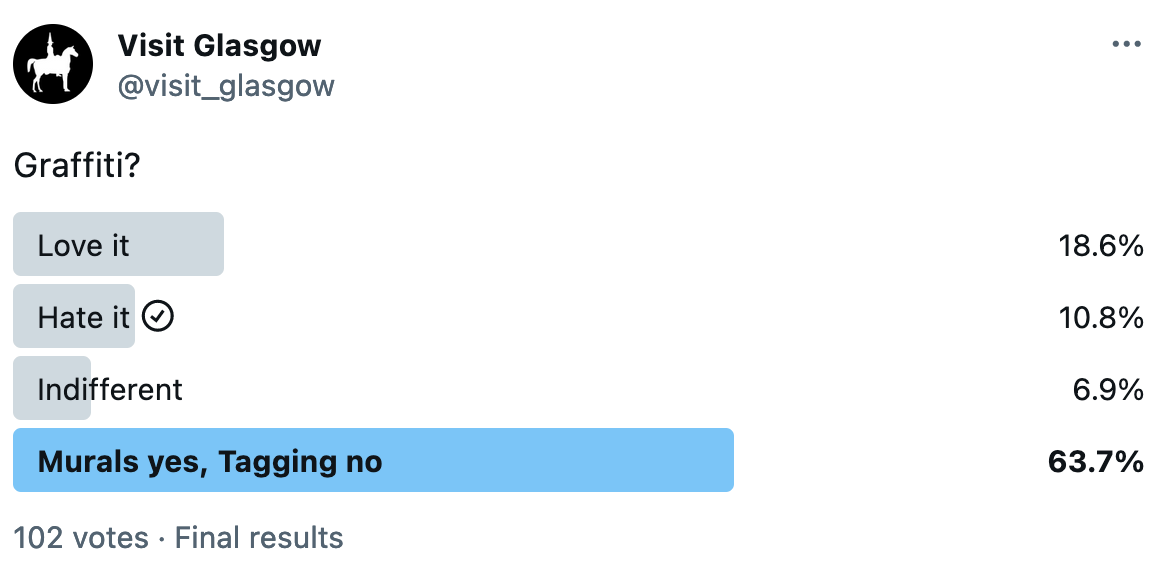
It will be interesting to see if anything changes when we see the Banksy show and what happens when graffiti enters the gallery. Is it still graffiti? I do like the aesthetics of some of those photos, I must admit. Nicer to look at than concrete …
Some illustrations from Hong Kong:
When there was a Banksy exhibition there, the man himself painted sheep flocking over a bridge to the arts building where it was held. He also did something massive and lovely on a huge pillar right outside the arts centre. All this was immediately covered in municipal grey which seemed extremely stupid.
Likewise, an environmental group did some ‘clean’ graffiti outside a government building, marking their message by cleaning the words onto the pavement. Did the government - clean the whole pavement to get rid of the offending graffiti? Paint over it? Concrete over it? Pick the most ludicrous option - that’s what happened.
I thought you might enjoy reading about the King of Kowloon - https://en.m.wikipedia.org/wiki/Tsang_Tsou-choi